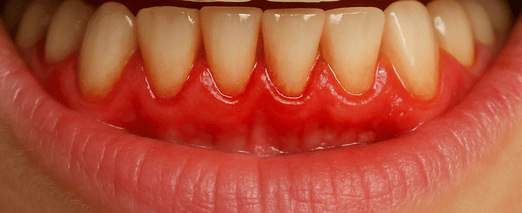How to Choose the Right Toothpaste for Your Needs
At Alpine Dental Clinic, we know that walking down the toothpaste aisle can be overwhelming. With so many options—whitening, sensitivity relief, natural formulas—how do you pick the best one for your smile? The right toothpaste can make a real difference in your oral health, so let’s break down what to look for based on your unique needs.
1. For Cavity Prevention: Fluoride is Key
Fluoride remains the gold standard for strengthening enamel and preventing decay. The Canadian Dental Association (CDA) recommends fluoride toothpaste for most adults and children over age two.
- Look for:
ADA or CDA Seal of Acceptance
Sodium fluoride or stannous fluoride in ingredients
- Avoid: Non-fluoride options unless specifically advised by your dentist (e.g., for very young children who might swallow toothpaste).
If you’re due for a checkup, our general dentistry services can assess your cavity risk.

2. For Sensitive Teeth: Block the Pain
If cold drinks or brushing makes you wince, a toothpaste for sensitive teeth can help. These contain potassium nitrate or stannous fluoride, which block pain signals from reaching nerves.
Pro Tip: Use consistently for 2-4 weeks to see full results. Avoid whitening toothpastes, which can worsen sensitivity.
3. For Whiter Teeth: Gentle Stain Removal
Whitening toothpastes use mild abrasives (like silica) or low-dose peroxides to lift surface stains. However, they won’t change your natural tooth color like professional teeth whitening can.
Caution: Overuse can wear down enamel. Alternate with a fluoride paste if using daily.
4. For Gum Health: Fight Plaque and Gingivitis
If your gums bleed when flossing, try a toothpaste with stannous fluoride or antibacterial ingredients like triclosan (in some formulas). These reduce plaque bacteria that cause inflammation.
Natural toothpaste option: Toothpastes with tea tree oil or aloe vera may soothe gums, but check for fluoride content.


5. For Kids: Safe and Fun Formulas
Children under six should use a pea-sized amount of fluoride toothpaste (to avoid swallowing too much). Flavors like bubblegum or strawberry can make brushing more enjoyable!
For Babies: Use a rice-grain smear of fluoride-free paste until they can spit.
6. “Natural” Toothpastes: Do They Work?
Charcoal, clay, or fluoride-free pastes are trendy, but not all are effective. The ADA warns that some abrasive natural ingredients (like charcoal) may damage enamel over time. If you prefer natural, look for:
-
Xylitol (a cavity-fighting sweetener)
-
Calcium phosphate (remineralizes enamel)
-
ADA-approved fluoride-free options (rare but exist)
Still Unsure? Ask Your Dentist!
Your toothpaste should match your oral health goals. At your next dental cleaning at Alpine Dental Clinic, ask us for personalized recommendations—we’re happy to help!
Final Tip: No matter which toothpaste you choose, proper brushing (twice daily for two minutes) and flossing matter most. Pair your routine with regular checkups to keep your smile healthy for life.




 Monday – Friday 8AM – 4PM
Monday – Friday 8AM – 4PM